Li-Po Battery Charger Based on the Constant Current/Voltage Parallel Resonant Converter Operating in ZVS
Abstract
:1. Introduction: Electrical Vehicles & Batteries
2. Power Stage
2.1. Selection
- The topology is controlled as a constant current source, and once a certain voltage level is reached, it is possible to change to a constant voltage source operation mode without transient problems (current/voltage spikes, frequency changes); this is the typical control strategy for Li-Po batteries.
- In order to increase the power stage efficiency, zero voltage switching (ZVS) is ensured in all the points, by means of frequency and duty cycle control, in both operating modes (CCS and CVS).
- The transformer inclusion allows operation with different input and output voltages.
- The topology allows the inclusion of transformer parasitic elements.
2.2. Topology Analysis and Design
- For frequencies above 70 kHz, the use of IGBTs is discouraged.
- If the input voltage increases above 700 V, MOSFETs are discouraged.
- For operating conditions out of the aforementioned limits, the selection must be silicon carbide MOSFETs, since they can operate at IGBTs’ voltage/current levels and MOSFETs’ frequencies. These devices can cope with higher losses, since the maximum junction operation range is around 200 °C, instead of 125 °C for silicon devices.
- The components are supposed to be ideal: neither resistors, nor parasitic capacitors/inductors, must be considered.
- The secondary circuitry is transferred to the primary side.
- The output current is constant; in other words, the output filter is ideal.
- The circuit is in steady state; thus, the voltage/current values at the end of one period correspond to the initial conditions for the next one.
- The input voltage is kept constant.
2.3. Normalized Plots: Design
- Select a suitable value for the transformer ratio.It should be noted that the VBAT and IBAT magnitudes are referred to the primary side. So, as soon as the normalized voltage battery value is selected, the transformer ratio is also selected. In other words, if a value of 0.81 is selected for the minimum battery voltage (let us say, 12 V), we have:Using this equation, it is possible to adjust the transformer ratio, rt, provided Vcc is fixed. As a consequence, the value of VBATMAX in normalized values can be obtained.
- Select the value for the base impedance, provided the charge current is known.The normalized value for the charge current is 1.15. If we assume that the charge current is set, for instance, to 4 A:From (11) it is possible to determine the base impedance value, ZB.
- Obtain the normalized value for the maximum battery voltage:
- Set the maximum (or minimum) frequency.Using Figure 8, the plot on the right can be used to set the minimum current value to switch the charger off; once this current and the corresponding duty cycle are known, the plot on the left determines the ϖ values. In the example represented in Figure 8 (see plot on the right), the converter starts operating in constant current mode (IBAT = 4 A; IBAT = 1.15, normalized) and the operation point moves vertically until the maximum battery voltage is reached (VBAT = 16.618 V; VBAT = 1.12, normalized). From that point on, the charger operates in constant voltage mode and the operation point moves horizontally until the minimum acceptable current is reached (IBAT = 2.887 A; IBAT = 0.83, normalized). By plotting these points on the plot on the left in Figure 8, the evolution of the switching frequency can be determined. When the charger reaches this minimum operating current, the strategy must be modified in order to reduce the current to a trickle charge value, for instance:Equation (13) allows values L and C to be derived, since impedance base is known by Equation (11). This completes the topology design.
3. Simulation and Experimental Results
- Input voltage: 12 V
- Maximum battery voltage: 16.8 V, minimum 12 V
- Output current: 4 A
- Switching frequency: 70 kHz
- MOSFETS: IRLU3636PBF, 60 V, 99 A, Rdson = 5.4 mΩ.
- Resonant and Filter Inductors: Material 3F3, core ETD34/17/11.
- 4S 4500 mAh, 25–50 C discharge peaks; 14.8 V, nominal charge current: 4 A, fast charge 8 A.
- 6S 16,000 mAh 20 C discharge peaks; 22.2 V, nominal charge current: 16 A, fast charge 32 A.
- 62 22,000 mAh 25 C discharge peaks; 22.2 V, nominal charge current 22 A, fast charge 44 A.
4. Discussion
Acknowledgments
Author Contributions
Conflicts of Interest
References
- Eddahech, A.; Briat, O.; Al Jed, H.; Chaari, R.; Mieze, A.; Simon, R.; Vinassa, J.M. Li-Po Batteries Modeling for Mail Delivery Electric Vehicles. In Proceedings of the 2011 IEEE Vehicle Power and Propulsion Conference, Chicago, IL, USA, 6–9 September 2011; pp. 1–5. [Google Scholar]
- Ananto, P.; Syabani, F.; Indra, W.D.; Wahyunggoro, O.; Cahyadi, A.I. The State of Health of Li-Po Batteries Based on the Battery’s Parameters and a Fuzzy Logic System. In Proceedings of the 2013 Joint International Conference on Rural Information & Communication Technology and Electric-Vehicle Technology (rICT & ICeV-T), Bandung-Bali, Indonesia, 26–28 November 2013; pp. 1–5. [Google Scholar]
- Chi, H.T.Q.; Park, D.H.; Lee, D.C. An Advanced Fast Charging Strategy for Lithium Polymer Batteries. In Proceedings of the 2015 IEEE 2nd International Future Energy Electronics Conference (IFEEC), Taipei, Taiwan, 1–4 November 2015; pp. 1–6. [Google Scholar]
- Cai, G.; Liu, D.; Liu, C.; Li, W.; Sun, J. A High-Frequency Isolation (HFI) Charging DC Port Combining a Front-End Three-Level Converter with a Back-End LLC Resonant Converter. Energies 2017, 10, 1462. [Google Scholar] [CrossRef]
- Hegazy, O.; Van Mierlo, J.; Barrero, R.; Lataire, P.; Omar, N.; Coosemans, T. A Comparative Study of Different Control Strategies of On-Board Battery Chargers for Battery Electric Vehicles. In Proceedings of the 2013 Eighth International Conference and Exhibition on Ecological Vehicles and Renewable Energies (EVER), Monte Carlo, Monaco, 27–30 March 2013; pp. 1–6. [Google Scholar]
- Lee, J.Y.; Yoon, Y.D.; Kang, J.W. A Single-Phase Battery Charger Design for LEV Based on DC-SRC With Resonant Valley-Fill Circuit. IEEE Trans. Ind. Electron. 2014, 62, 2195–2205. [Google Scholar] [CrossRef]
- Hegazy, O.; Van Mierlo, J.; Lataire, P. Design and Control of Bidirectional DC/AC and DC/DC Converters for Plug-In Hybrid Electric Vehicles. In Proceedings of the 2011 International Conference on Power Engineering, Energy and Electrical Drives, Malaga, Spain, 1–13 May 2011; pp. 1–7. [Google Scholar]
- Chuang, Y.C.; Ke, Y.L.; Chuang, H.S.; Chen, Y.M. Analysis and Implementation of Half-Bridge Series–Parallel Resonant Converter for Battery Chargers. IEEE Trans. Ind. Appl. 2011, 47, 258–270. [Google Scholar] [CrossRef]
- Gücin, T.N.; Biberoğlu, M.; Fincan, B. Constant-Current Constant-Voltage Charging Based Control and Design Approach for the Parallel Resonant Converter. In Proceedings of the 2015 International Conference on Renewable Energy Research and Applications (ICRERA), Palermo, Italy, 22–25 November 2015; pp. 414–419. [Google Scholar]
- Steigerwald, R.L. A comparison of half-bridge resonant converter topologies. IEEE Trans. Power Electron. 1988, 3, 174–182. [Google Scholar] [CrossRef]
- Tanaka, J.; Yuzurihara, I.; Watanabe, T. Analysis of a full-bridge parallel resonant converter. In Proceedings of the Thirteenth International Telecommunications Energy Conference—INTELEC 91, Kyoto, Japan, 5–8 November 1991; pp. 302–307. [Google Scholar]
- Swamy, M.M. Analysis, Design, and Optimization of a Fixed-Frequency Parallel Resonant converter. In Proceedings of the 1992 International Conference on Industrial Electronics, Control, Instrumentation, and Automation, San Diego, CA, USA, 9–13 November 1992; pp. 166–172. [Google Scholar]
- Diaz, J.; Saiz, P.J.V.; Martin-Ramos, J.A.; Martin-Pernia, A.; Martinez, J.A. A High-Voltage AC/DC Resonant Converter Based on PRC With Single Capacitor as an Output Filter. In Proceedings of the IEEE transactions on Industry Applications, Houston, TX, USA, 4–8 October 2009; Volume 46, pp. 2134–2141. [Google Scholar]

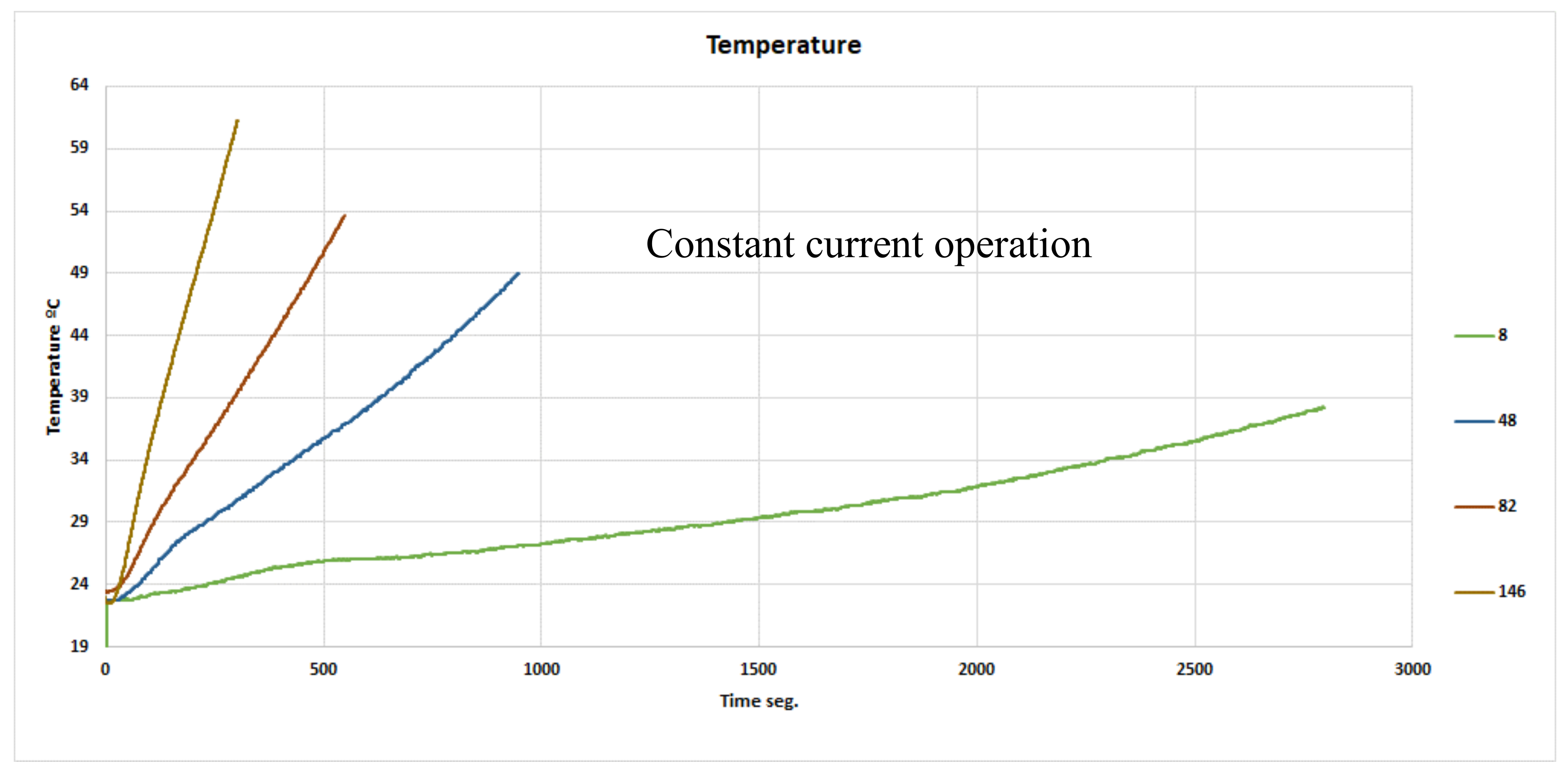

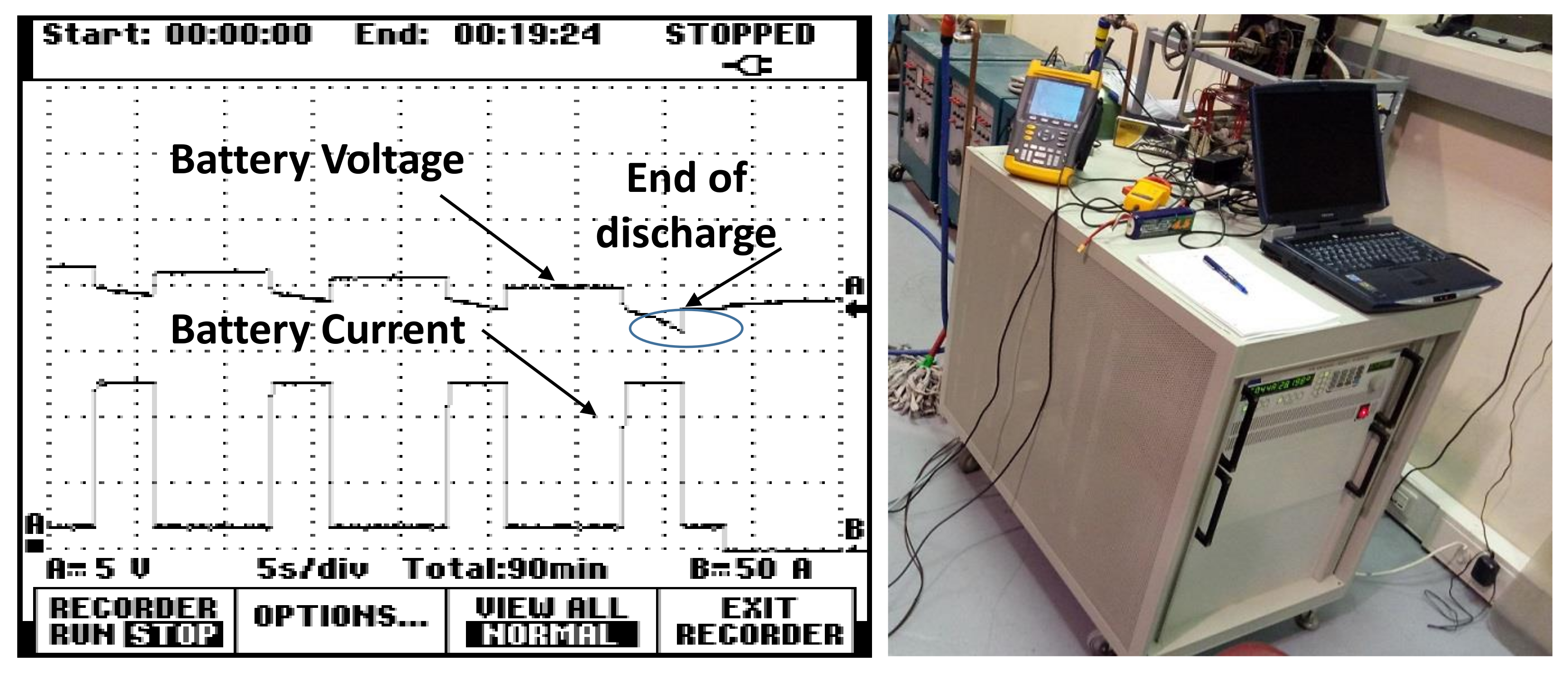
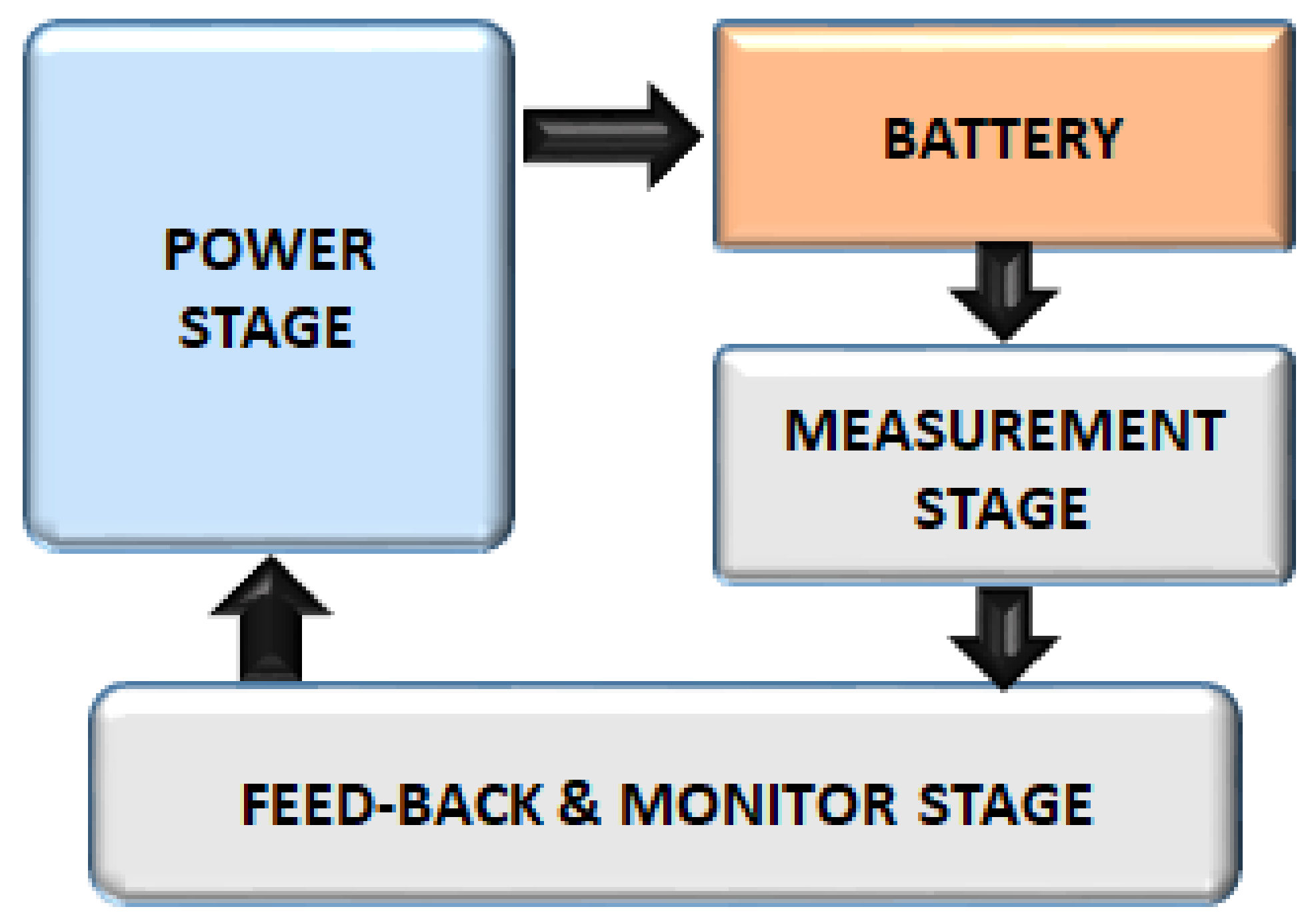
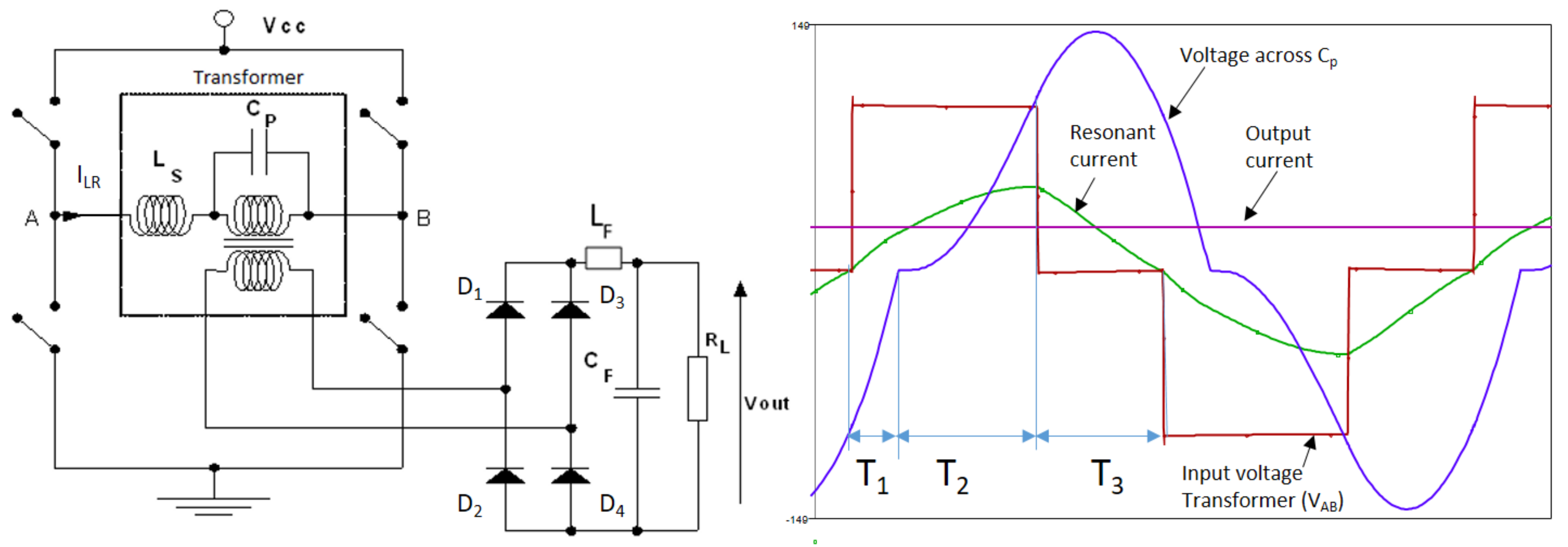

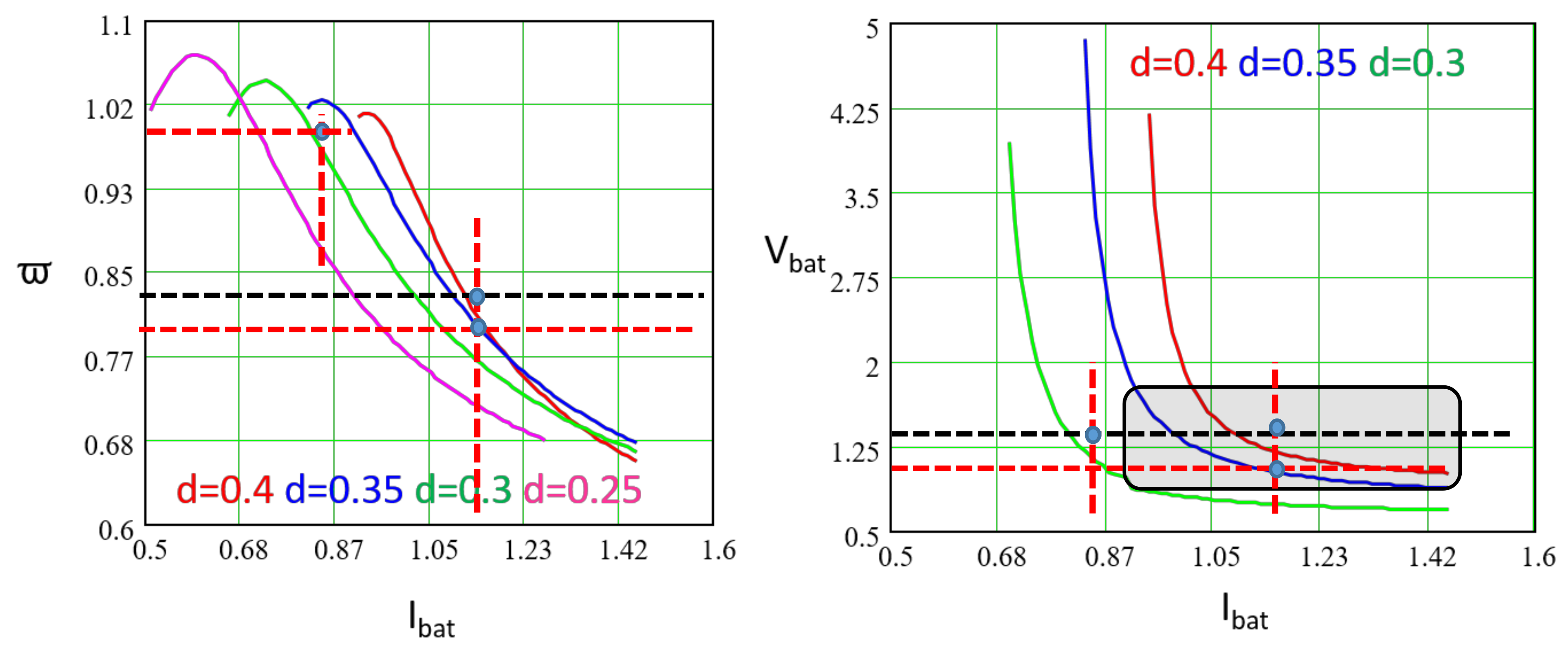
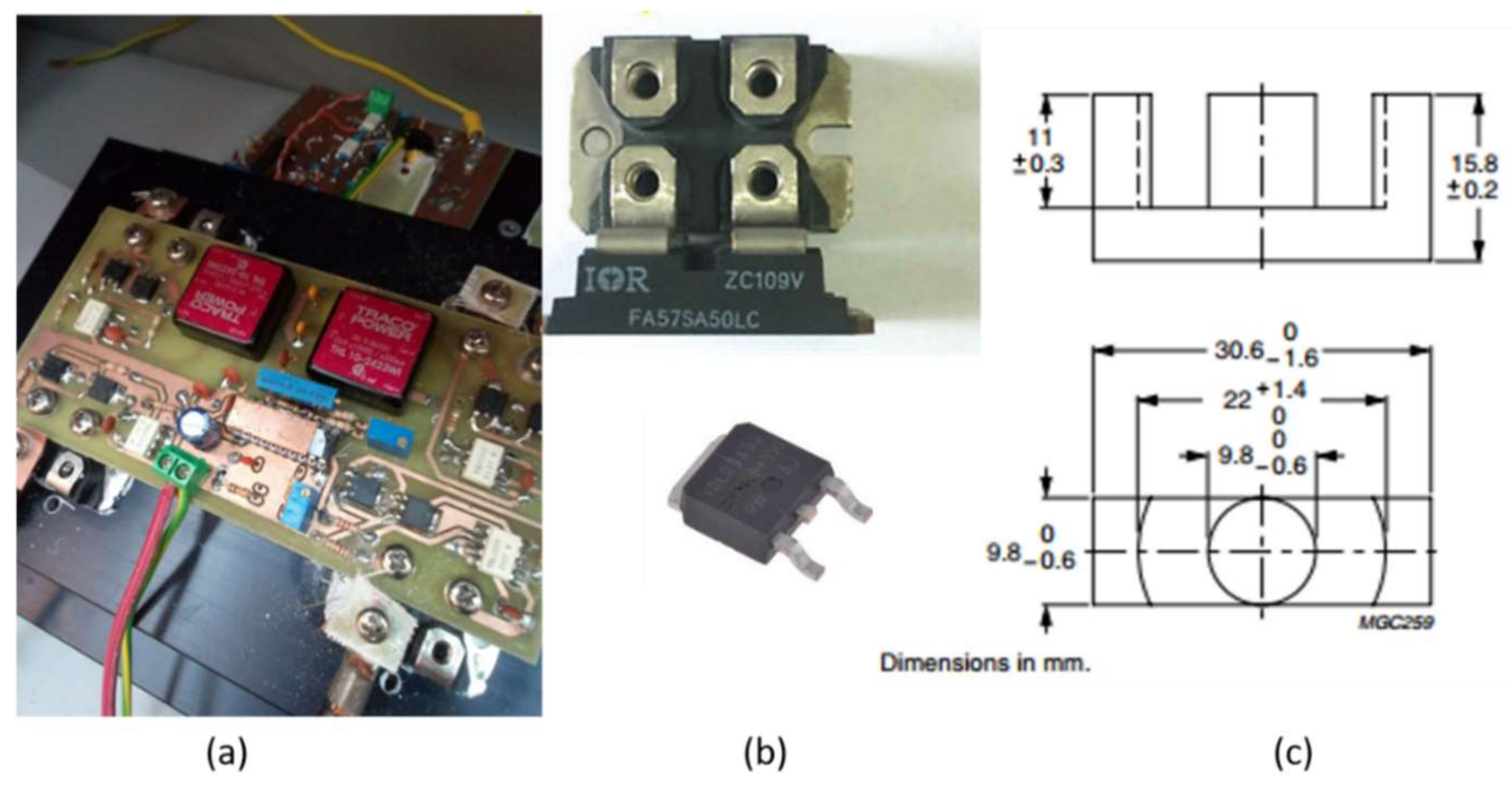
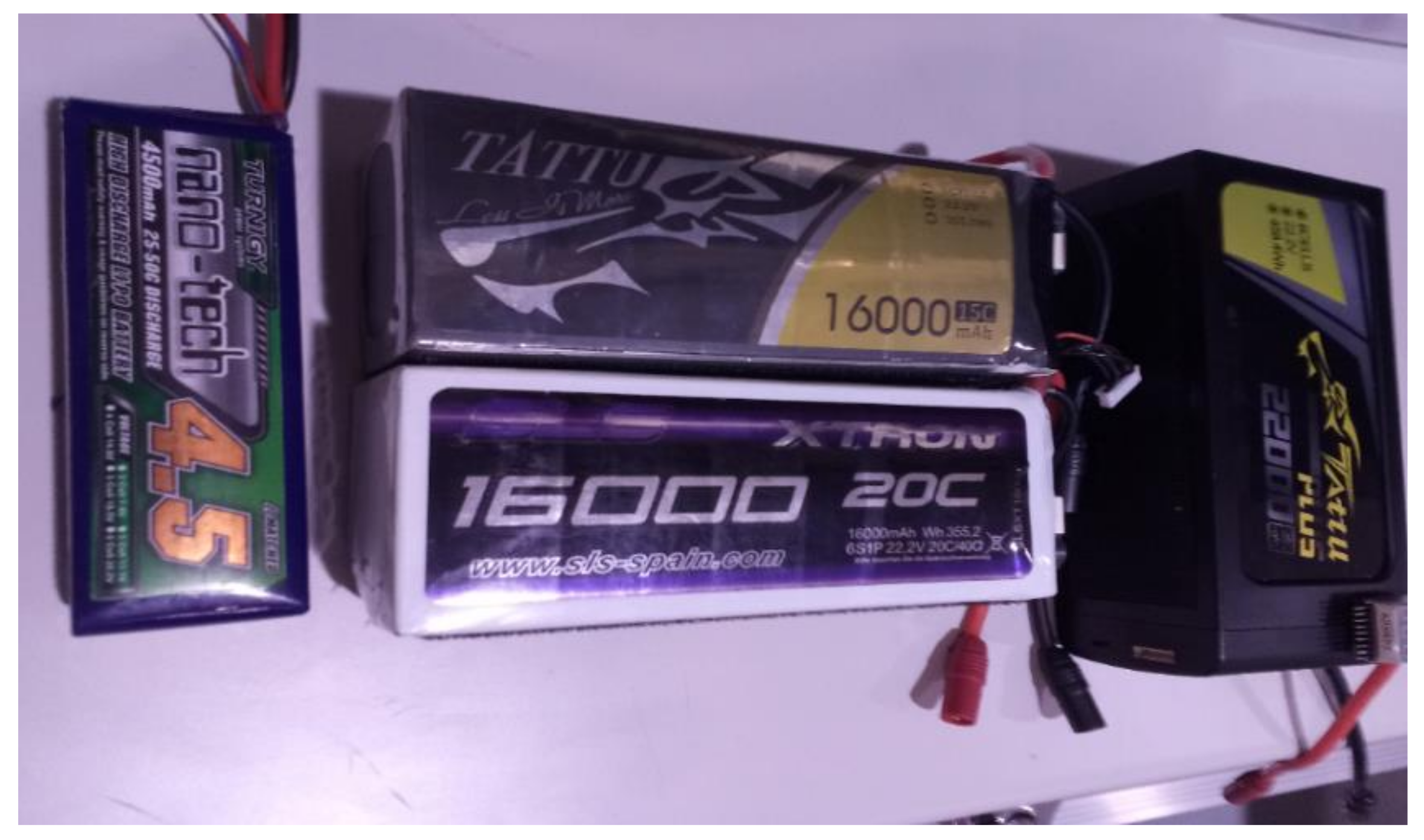
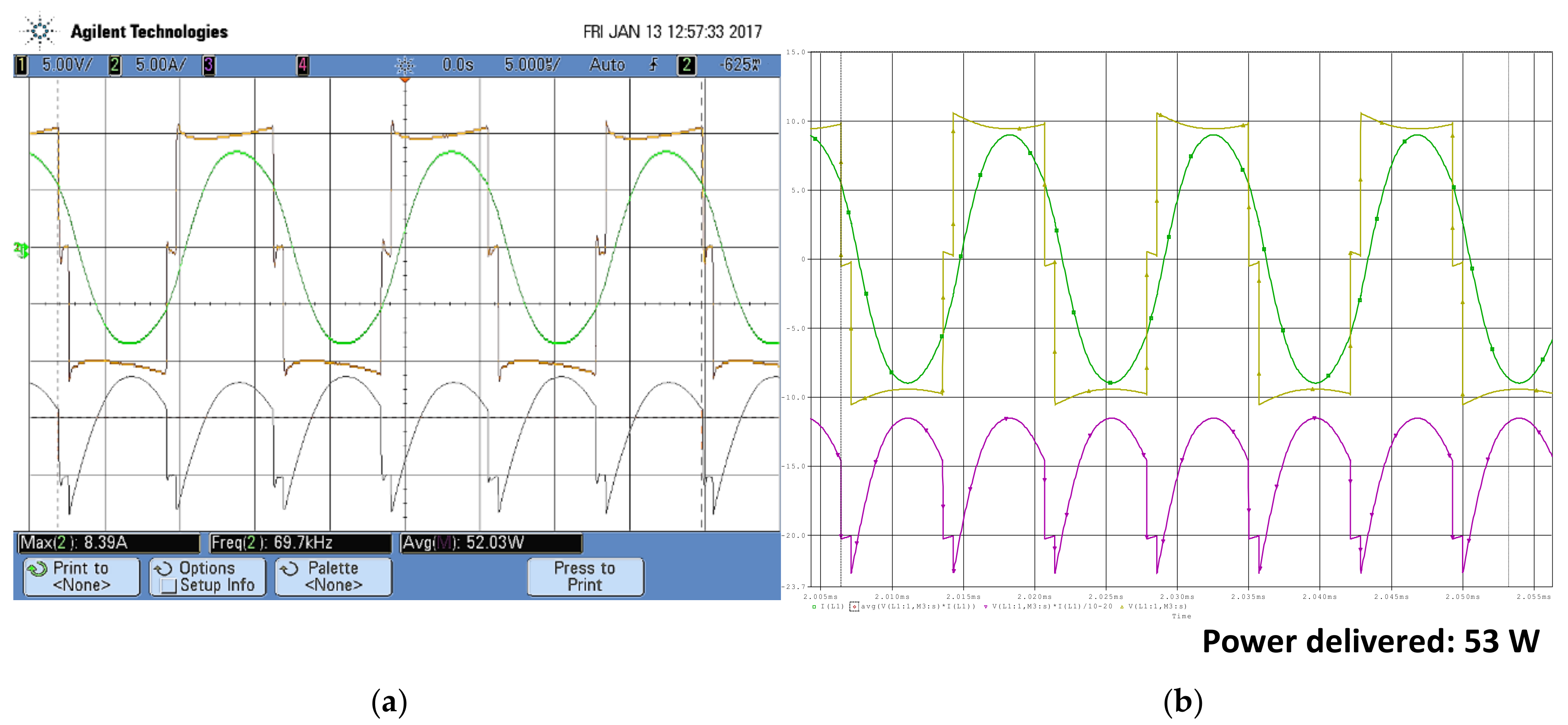
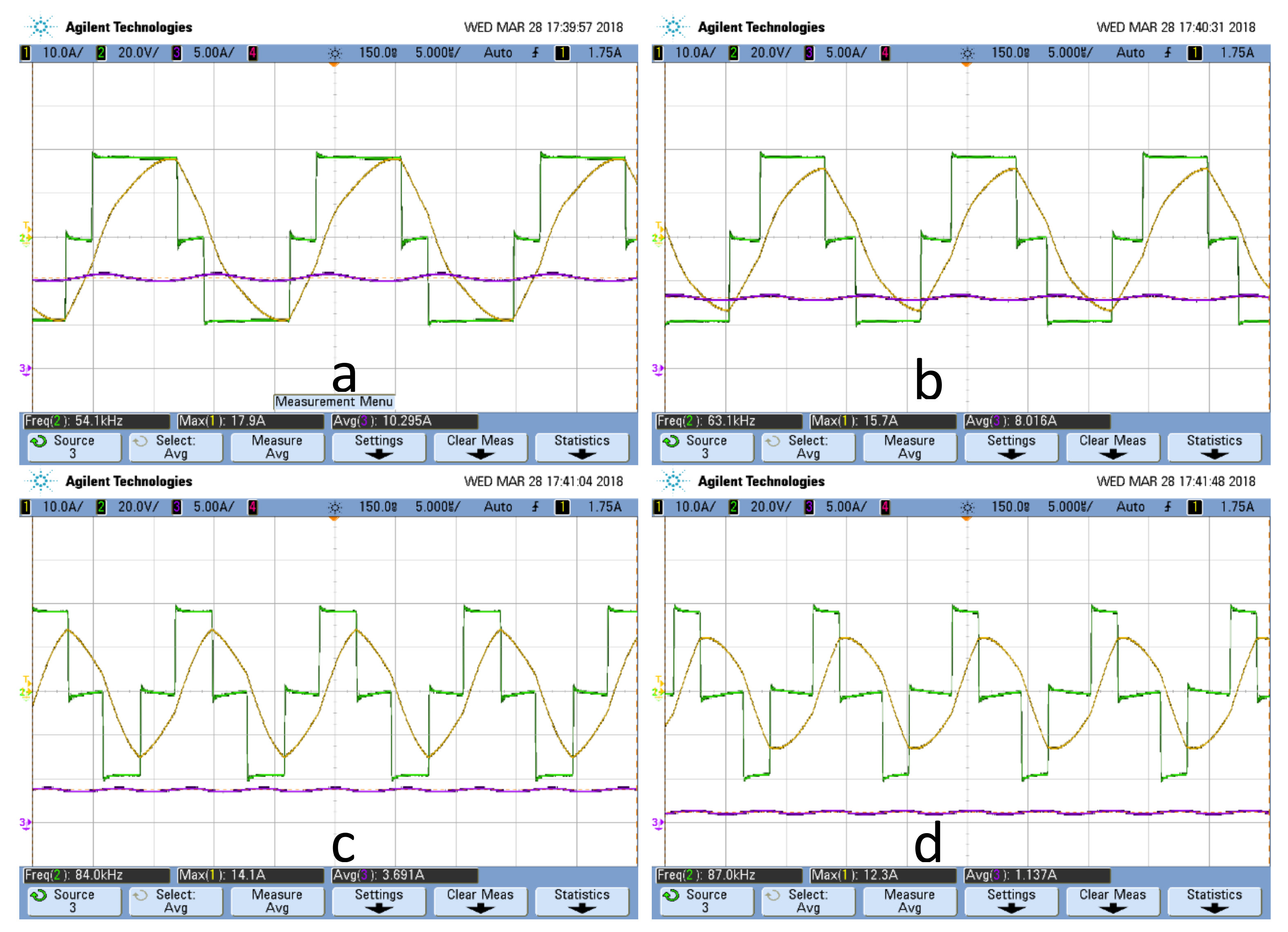
| Parameter | Pattern 1 | Pattern 2 | Pattern 3 |
|---|---|---|---|
| Tm | 6 s | 8 s | 9 s |
| Tp | 3.5 s | 2 s | 1 s |
| Im | 20 A | 34 A | 32 A |
| Ip | 110 A | 110 A | 200 A |
© 2018 by the authors. Licensee MDPI, Basel, Switzerland. This article is an open access article distributed under the terms and conditions of the Creative Commons Attribution (CC BY) license (http://creativecommons.org/licenses/by/4.0/).
Share and Cite
Pernía, A.M.; Díaz-González, J.; Prieto, M.J.; Fernández-Rubiera, J.A.; Fernández-Cabanas, M.; Nuño-García, F. Li-Po Battery Charger Based on the Constant Current/Voltage Parallel Resonant Converter Operating in ZVS. Energies 2018, 11, 951. https://doi.org/10.3390/en11040951
Pernía AM, Díaz-González J, Prieto MJ, Fernández-Rubiera JA, Fernández-Cabanas M, Nuño-García F. Li-Po Battery Charger Based on the Constant Current/Voltage Parallel Resonant Converter Operating in ZVS. Energies. 2018; 11(4):951. https://doi.org/10.3390/en11040951
Chicago/Turabian StylePernía, Alberto M., Juan Díaz-González, Miguel J. Prieto, José A. Fernández-Rubiera, Manés Fernández-Cabanas, and Fernando Nuño-García. 2018. "Li-Po Battery Charger Based on the Constant Current/Voltage Parallel Resonant Converter Operating in ZVS" Energies 11, no. 4: 951. https://doi.org/10.3390/en11040951
APA StylePernía, A. M., Díaz-González, J., Prieto, M. J., Fernández-Rubiera, J. A., Fernández-Cabanas, M., & Nuño-García, F. (2018). Li-Po Battery Charger Based on the Constant Current/Voltage Parallel Resonant Converter Operating in ZVS. Energies, 11(4), 951. https://doi.org/10.3390/en11040951








